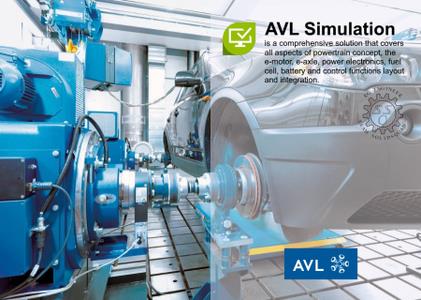
AVL Simulation Suite 2022 R1 | 35.9 Gb
Product:AVL Simulation Suite
Version:2022 R1 Build 153
Supported Architectures:x64
Website Home Page :www.avl.com
Languages Supported:english
System Requirements:Windows *
Size:35.9 Gb
The software developer Advanced Simulation Technologies (AST) is pleased to announce the availability of AVL Simulation Suite 2022 R1 is a comprehensive solution that covers all aspects of powertrain concept, the e-motor, e-axle, power electronics, fuel cell, battery and control functions layout and integration.
Release 2022 R1
We are pleased to announce the latest software releases for the following solutions:
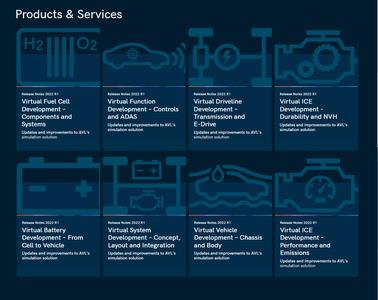
Quick and Easy Task Configuration
If concrete insights are to be obtained when using simulation techniques, then all results and experimental references must correspond. This requires the simulation model parameters to be correctly configured, something that is both essential and simultaneously challenging. Apart from requiring a fundamental understanding of how each individual parameter affects the model, the fidelity of the model and the quality of experimental data also need to be high. Achieving all this can rapidly become very time consuming.
This latest release of AVL CRUISE M, our system simulation tool, offers you a new wizard. The Fuel Cell Parameterization Wizard is specifically tailored for the fast and automated configuration of performance models based on input data from classic steady-state stack characterizations, i.e. polarization curves and/or transient measurement data, reducing your configuration effort from days to minutes.
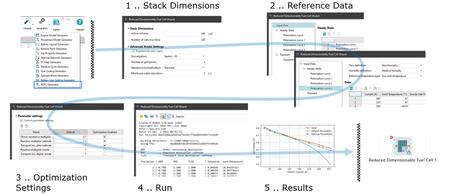
Figure 1: Fuel Cell Parameterization Wizard workflow
Tracing Reactant Crossover
The existing Proton Exchange Membrane Fuel Cell (PEMFC) Model in CRUISE M now considers the crossover of reactants through the membrane, allowing you to treat the influences of activation losses on the cell voltage, especially at very low current densities, with even greater accuracy.
This is achieved by fully accounting for the diffusion of the reactants and their reaction at the catalyst layers of the opposite electrode. The latter is driven by the partial pressure differences of hydrogen and oxygen in the anode and cathode gas channels.

Figure 2: Reactant Crossover Model
PEMFC Ionomer Degradation
The existing models used to describe chemical degradation in the catalyst layer of PEM fuel cells have been supplemented in CRUISE M 2022 R1 with a model of the destruction of the ionomer, i.e., the degradation of the membrane serving as electrolyte between anode and cathode. The model considers the formation of peroxide at the catalyst layers, its transport through the membrane, and the formation of hydroxyl radicals in the presence of iron cations and protons. The attack of the hydroxyl radicals on the ionomer is modelled by means of four reactions releasing carbon dioxide and hydrofluoric acid as gaseous reaction products. The stressors (inputs) for the ionomer degradation model are the local potential, membrane humidity, temperature and oxygen concentration, and its outputs comprise the time evolution of the ionomer components, the produced gas species, and the change of the membrane thickness and membrane equivalent weight.
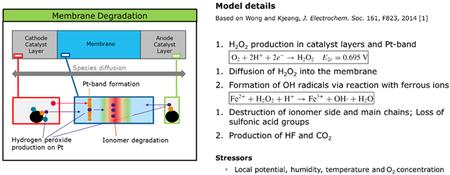
Figure 3: Membrane Degradation Model
Simple Coupling of Various Degradation Models
The latest version of the PEMFC Model in CRUISE M allows you to easily couple the Performance Model with the Mechanical and Chemical Degradation Models. This enables the easy determination of the effects of various stress factors such as catalyst voltage and temperature, hydrogen and oxygen concentrations, as well as catalyst relative humidity on, for example, exchange current density, membrane thickness and membrane equivalent weight.
Based on the 1D discretization of the stack in longitudinal and channel-flow direction, the different aging behavior at the different stack positions can be simulated. Furthermore, the open model architecture allows you to easily incorporate custom degradation models and to benefit from the high-fidelity and fast stack model integrated in CRUISE M
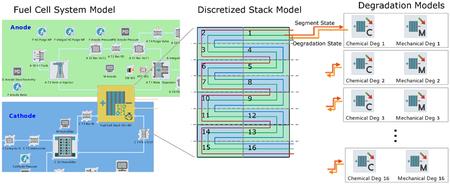
Figure 4: Closed Coupled Degradation and Performance Model
Simulate Solid Oxide Fuel Cells and Electrolyzers at System Level
The new Solid Oxide Stack Model in CRUISE M provides the ability to perform comprehensive simulations of solid oxide fuel cells and solid oxide electrolyzers on a system level.
The 1D model is based on a multi-physics approach that combines gas-dynamic, thermal, chemical, electrochemical, and electrical aspects in one. Here, the electrochemical conversion of hydrogen and carbon monoxide follows the classical Butler-Volmer equation. Thereby, both are embedded in a thermodynamically consistent, reduced dimensionality approach. It is this consistency of the first principal equations that allows a smooth transition between fuel cell and electrolyzer operation driven only by reactant availability and current direction. If required, additional Arrhenius-type equations can be adopted for water gas shift, methane reforming and ammonia decomposition.
The physical depth and ease-of-use is rounded off by a robust and real-time capable solver. The computational speed and robustness offered makes this new model the first choice for HiL-based applications.
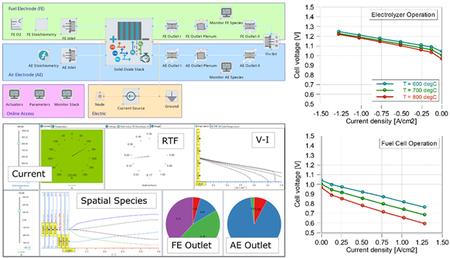
Figure 5: Solid Oxide Fuel Cell and Electrolyzer Model
Integrating the High-Pressure Tank
The introduction of a high-pressure tank component allows studies to be performed on the actual tank volume, heat losses to the ambient, as well as charge and discharge through corresponding valves, including a relief device regulated by a dedicated control function.
The entire tank model is composed of atomic CRUISE M components such as plenum, restriction, etc. that are placed in a masked subsystem. On the input top-level, all key model parameters are made available for an easy and straightforward access. If needed, the openness of the approach also allows drilldowns into the subsystem and the refinement of the component configuration according to the actual needs. The well-known Joule-Thomson effect is taken into account by activating the real-gas treatment in the gas composition settings.
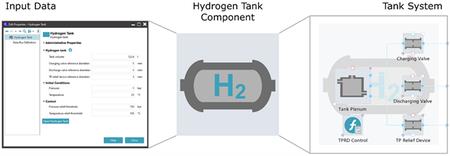
Figure 6: High-Pressure Hydrogen Tank Model
Ability to Calculate Realistic Aging Processes
With the current release 2022 R1, AVL FIRE M offers you models for platinum dissolution and redeposition in the catalyst layer. This includes Ostwald Ripening, i.e., the effect of platinum dissolution on particle size, as well as for particle detachment and agglomeration. In addition, a Particle Size Distribution (PSD) Model is available that describes the change in catalyst particle sizes due to degradation effects. In combination with the already available ionomer degradation models, this allows you the detailed analysis of effects such as catalyst layer and membrane thinning, reduction of exchange current density, increase of diffusion resistance in the ionomer film and changes in the local current and heat sources. In addition, the novel sub-cycling numerical solution approach offered in this release provides you the possibility to efficiently simulate a large number of voltage or current cycles over a long duration, e.g. some 100 hours.

Figure 7: Simulated electrochemically active surface area (ECSA) reduction
Low Temperature PEM Electrolyzer
The PEM fuel cell module in FIRE M 2022 R1 has been extended to enable the simulation of PEM electrolyzers with water being the fuel and with hydrogen and oxygen generated as reaction products. The model fully considers the transport of electrons, ions, gas species, and liquid water, as well as the thermal conditions in all relevant domains. The model also covers the hydrophilic nature of the porous media involved, the iridium or ruthenium properties of the anode catalyst, and the properties of sintered or woven titanium in the anode porous transport layer. In addition, convective water transport across the membrane due to pressure gradients is taken into account and the Eulerian multiphase approach is adopted to model the dispersed gas phase within the liquid phase continuum. Accordingly, the property database (PDB) has been extended with new default materials for the PEM electrolyzer application and the material parameter hydraulic permeability has been added for aqueous ionomer materials.
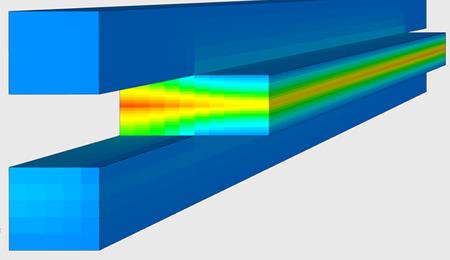
Figure 8: Simulated PEM electrolyzer temperature
The automotive industry is in a constant state of change and so too are your needs. To meet them, we at AVL are permanently working on the further development of our products and services to support you in completing your daily tasks.
The latest release of our simulation solution for virtual function development, 2022 R1, includes OpenSCENARIO standard coverage by AVL Scenario Designer™ and multi-level co-simulation performance optimization in Model.CONNECT™. Tighter strategic integration with open source ADAS tools such as CARLA is continued with new integration features in both Model.CONNECT and AVL VSM™.
Scenario Multi-Version and Portability Support in AVL Scenario Designer
The new version of Scenario Designer introduces a framework for the parallel maintenance of multiple versions of the standards with backwards compatibility.
Furthermore, relative referencing of the actors provides easier re-use of the maneuvers and events.
Improved scene handling allows you to manage real road maps based on GPS data, map rotation, and elevation editing.
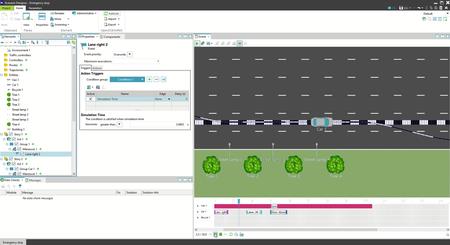
Figure 1: AVL Scenario Designer
Model.CONNECT Performance Optimization
Improved performance is extremely important for the optimization of complex, real-time systems and for cloud computing applications such as SiL optimization and advanced driver assistant systems (ADAS).
The new release of Model.CONNECT focuses on optimizing the co-simulation performance in multiple ways:
- Improvement of the co-simulation of model-coupling element (such as FMUs)
- Significant improvement for Simulink models with a large number of ports
- Performance improvement of vector ports in the "ICOS Custom" component
- Performance improvement of the DLL-Link interface as the basis for the majority of tool interfaces
- Multi-threaded result output without negative influence on co-simulation performance
- CPU load monitoring tool add-ons

Figure 2: Model.CONNECT Performance Optimization
Model.CONNECT Interfaces for ADAS
The interface components for CARLA and VTD, the two most relevant environment simulation tools supported by Model.CONNECT, have been upgraded. This means that you can now use the latest software version of the tools as well as use some new features such as GPS ground truth sensors, sensor objects in VTD and vehicle integration in CARLA.
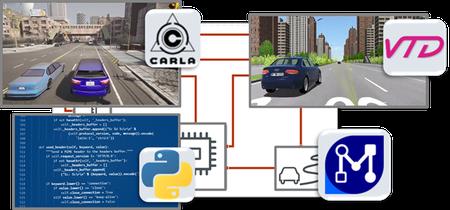
Figure 3: New interfaces and upgrades
Python Model Interface Component
The Python programing language plays an important role in the development of applications in the field of ADAS and data processing. Model.CONNECT supports it with a dedicated interface component for user-specific Python code including optimized integration features and optimized co-simulation performance.
FMI 3.0 Beta
FMI is a de-facto standard for co-simulative model integration and is also supported by all major authoring tools. The development of the standard is carefully planned by the co-simulation community around Modelica Association. Model.CONNECT is among the first tools to support the recently released FMI 3.0 in a beta version. It also adds some new features such as 3D look-up tables, essential for the virtual calibration application via the built-in XCP interface.

Figure 4: FMI 3.0-beta limited support
Application Example: Virtual ADAS Function Validation in the Cloud
Together with our colleagues from vehicle engineering, we have developed a solution for a large-scale virtual validation of autonomous driving functions such as the Automated Lane Keeping Assistant (ALKS). This was carried out using the cut-in and cut-out scenarios in a complex set-up in which both safety and comfort relevant features were evaluated.
Both cloud execution and data analytics were fully automated on about 500 cores using Model.CONNECT as an integration platform, AVL VSM as the validated vehicle model, and AVL DRIVE as the online assessment tool for perceived safety and driving comfort.
Deployment on 5000 cores would enable even high scalability and the execution of up to one million test cases per day.
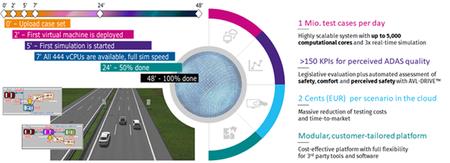
Figure 5: One million test cases per day
Advanced AVL VSM Vehicle Model Integration with Environment Simulation
The latest version of VSM - 2021 R1.3 - provides even better integration with external environment simulations:
- Using Model.CONNECT, we have created a best-practice example that demonstrates the integration of VSM off-road vehicle physics in the open-source environment simulation CARLA. The unique soft-soil simulation capabilities of VSM and the 3D terrain models created in CARLA are a perfect match. This combination enables the virtual development of ADAS functions for off-road vehicles.
- VSM 2021 R1.3 also contains an updated template for the creation of vehicle physics plugins. Using this template, it is possible to directly integrate VSM into arbitrary 3rd party environment simulations. A ready-to-run example demonstrates the integration with rFPro for autonomous driving.
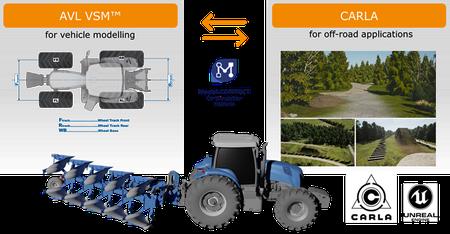
Figure 6: Off-Road - AVL VSM, CARLA, Unreal, Model.CONNECT
AVL EXCITE for e-axle
MFC-Based Model for Electric Motor Joints - Electro-Mechanical Coupling (EMC2)
An electric motor joint model constructed using magnetic field computation (MFC) offers you the possibility to analyze the following within one model:
- Low-frequency coupling phenomena of rotor dynamics and control system
- Acoustic excitation of the stator teeth via surface-based linking nodes
Both concentric and eccentric rotor behavior can be analyzed. In addition, the eccentric option offers the possibility to consider dynamic rotor eccentricity such as parallel offset, misalignment or bending. Slices are used to consider skewing and eccentricity.
You have two options for model parameterization. This can be done with the help of the e-motor tool by simply specifying the geometry, material and electrical boundary conditions. The electromagnetic simulations for the model parameters are then set up, performed and post-processed in the background. Alternatively, you can use the "EMC Model Assistant" of the app library to import text file-based results from third-party tools.
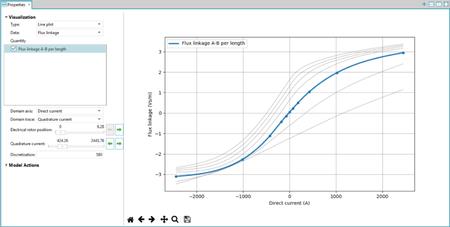
Figure 1: Line Description of flux linkage vs. stator direct-/quadrature-axis currents
The result of the model parameterization is a new model entry in the e-motor model file (*.EMM) for use in AVL EXCITE for e-axle models.
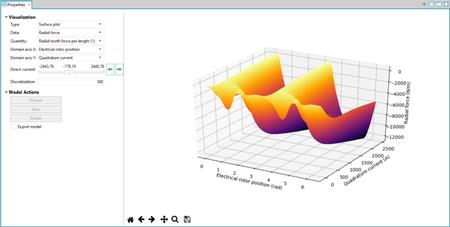
Figure 2: Surface Description for radial force of tooth 1 vs. rotor angle and quadrature current: surface Descriptions give an overview on saturation behavior or impact of slotting.
The focus view shows you the stator tooth forces applied to the model slices. This provides you the opportunity to check the force application as well as the joint discretization in the axial direction. Rotor angular position and current excitation can be varied with sliders.

Figure 3: Joint focus view with force components acting on model slices
Additional Joints Now Available in AVL EXCITE for E-Axle
To further enhance usability, the following joints have been migrated to the AVL Simulation Desktop (SDT) graphical user environment and are now available.
- Dual Mass Flywheel Map-Based Joint
- Hydraulic Torque Converter Map-Based Joint
- Viscous Damper Joint
Viscous Modal Damping
A new feature of the EXCITE solver is the optional use of viscous modal damping for bodies. In this way, you can consider arbitrary frequency dependencies of the body damping by simply defining the damping versus frequency. With this, the EXCITE solver calculates the corresponding modal damping matrix.
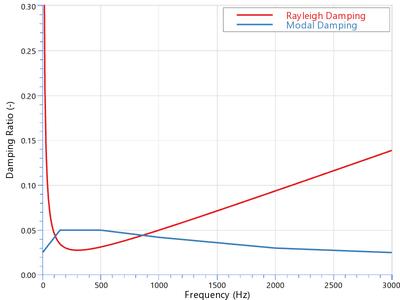
Figure 4: Example of typical Rayleigh damping characteristic (red) and user defined viscous modal damping (blue)
Short-Time Fourier Transform Analysis
With the new NVH Post-Processing app, you can easily and efficiently generate frequency Descriptions from transient time domain simulation results. For example, you can use the results of the ramp-up simulation of an internal combustion engine. The core functionality of this app is a frequency spectrum analysis of transient time signals using short-time Fourier transform (STFT).
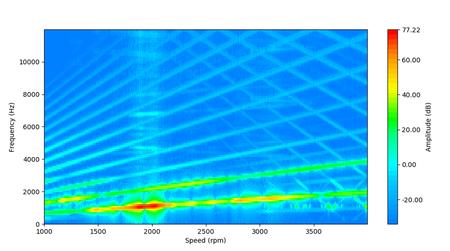
Figure 5: Transient time result - 2D Description results of a STFT analysis
Noise Radiation - Input Power per Panel
In acoustics the input power is a common quantity used to measure the power associated with mechanical vibrations. AVL EXCITE Acoustics now offers you the possibility of using user-defined panels to view the distribution of the total input power to the different subsystems. This gives you the data for each individual system separately.

Figure 6: Multi local velocities, acoustic mesh and it's panels (top), input power results per user-defined panel (bottom)
Data Exchange of Friction Loss Geometrical Regions for AVL FIRE M Thermal Simulation
To predict the oil flow inside a gearbox, EXCITE for e-axle supports the export of the geometry and kinematic motion data for the AVL FIRE M embedded body method. As an enhancement, you can now also export geometric regions on gears and rolling bearings that are exposed to heat due to frictional losses.

Figure 7: Creation of power loss region data through export of animation data from AVL EXCITE for e-axle
AVL FIRE M
Improvements of Electromagnetic 3D Simulation
In order to achieve a faster and more reliable results, the 3D electromagnetic solver has been updated in terms of numerical robustness and convergence speed. The new approach was verified with simplified magnetostatic cases and with the simulation of a permanent magnet synchronous machine.
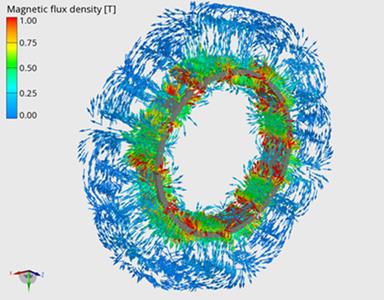
Figure 8: Magnetic flux density in magnet, rotor and stator of a permanent magnet synchronous machine (PMSM)
New Solution App for E-Motor Cooling with Rotating Cooling Jets
Efficient cooling systems are vital to ensure the durability and reliability of an electric motor.
FIRE M now supports you with a fully automated workflow for oil spray cooling provided in the E-Motor Cooling App. After you have imported the e-motor CAD geometry into the system, the app takes over the next steps. The workflow includes everything from the preparation of the mesh to the setup, computation, and post-processing.
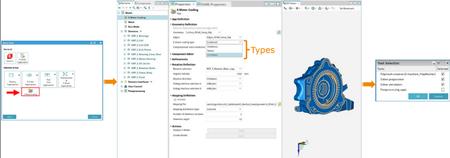
Figure 9: E-machine cooling simulation method
Due to their complexity, the simulation of spray cooled e-motors is a special challenge. Therefore, the app offers an automatic workflow that supports you in the thermal analysis of oil- and/or air-cooled systems in a typical stator spray, rotor spray or combined rotor and stator spray cooled e-motor.
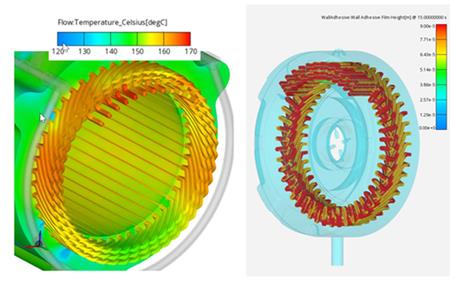
Figure 10: Thermal analysis simulation
Wall Adhesion Force with Contact Angle and for Embedded Body
Wall adhesion is an important physical phenomenon which determines the amount of fluid sticking to solid surfaces. This has a significant effect on the heat transfer calculation for applications such as e-motors, transmissions, and torque or power loss prediction in transmission applications. A wall adhesion phenomenon is now available for the embedded body approach used for the transmission simulation.
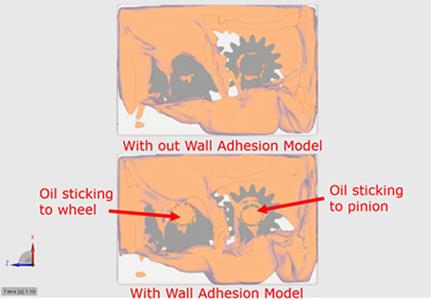
Figure 11: Wall Adhesion Model
Enhancements for the Embedded Body Energy Equation
The implementation of the energy equation for embedded bodies has been significantly improved in FIRE M 2022 R1. Wall heat transfer functions are now included in the solution procedure. The structure of the energy solution has been extended to include the consideration of viscous heating effects on embedded solid surfaces, general temperature limits, and the solid time-step multi-application. As for the specific energy solution for embedded bodies, you now have the possibility to define the thermal resistance, the heat flows and the volumetric heat sources. This is possible for the whole body or only for a selection. Furthermore, you can determine whether the output for post-processing is in 2D or
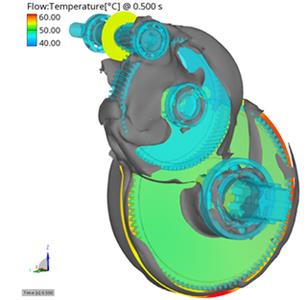
Figure 12: Embedded bodies analysis
Consideration of Mode-Dependent Body Damping
A new feature of the AVL EXCITE™ Power Unit Solver is the optional use of viscous modal damping for bodies. The advantage of this approach is that you can define an appropriate damping factor for each mode. With other approaches such as Rayleigh damping, this is only possible to a limited extent.
This can be achieved in two ways by definition of the fraction of critical damping, either for each mode, or versus frequency. From here, the EXCITE solver then takes over. The solver calculates the corresponding viscous modal damping matrix based on the mass-normalized eigenvectors. This matrix is then applied as damping to the corresponding body of the EXCITE model.
This new type of damping can of course be combined and augmented with all other types of damping supported by EXCITE.
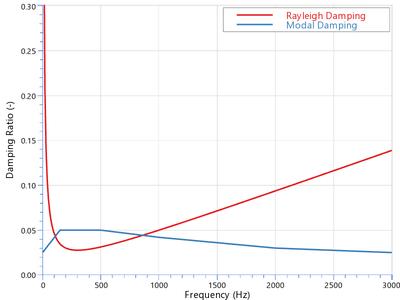
Figure 1: Example - typical Rayleigh damping characteristic (red) and user defined viscous modal damping (blue)
Upgrade Your NVH Post-processing
This new release of EXCITE introduces a new NVH post-processing app. Following the workflow in the app allows you to investigate acoustic phenomena easily and efficiently in transient time results, such as the simulation results of a run-up of an internal combustion engine.
The core functionality of the app provides a frequency spectrum analysis of transient time signals using short-time Fourier transform (STFT) analysis. The 1D time signals can be provided in GIDAS or CSV file format. The app automatically locates available channels and offers them to you for selection. To prepare and customize the input data, it provides you with various options such as re-sampling to constant sample size, custom sub-interval definition, windowing options, and much more.
The results are displayed as 2D Campbell Descriptions or 3D waterfall Descriptions.
The "order analysis" function enables you to track a specific order over time/engine speed.
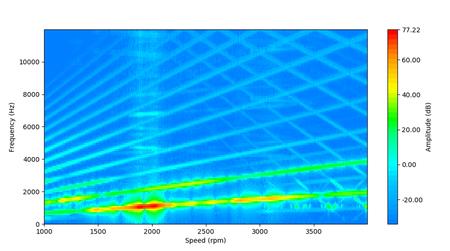
Figure 2: Transient time result - 2D Description results of a STFT analysis
Gain More Insights into Noise Radiation
The input power is a common quantity used in acoustics to measure the power associated with mechanical vibrations. AVL EXCITE Acoustics now provides you the option to gain more insights into how the total input power is distributed over different subsystems and areas of a power unit via user-defined panels.

Figure 3: Multi-local velocities, acoustic mesh and its panels (top), input power results per user-defined panel (bottom)
Consider Lateral Gas Connections During Piston Ring Analysis
The new version of AVL EXCITE Piston&Rings is capable to consider lateral gas ports on the top flanks of the first and second piston ring grooves for the optimization of the entire piston ring system.
This new function allows you to analyze to what extent the sealing of the rings against the liner can be improved by such ports. In addition, you can investigate how they affect parameters such as friction, blow-by and lube oil consumption (LOC).
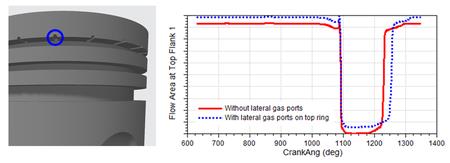
Figure 4: Example - lateral gas ports on groove of piston top ring and effect on flow area at top flank
Take Your Thermal Battery Analysis to the Next Level
This release now enables you to optimize the thermal design of the battery not only for new cells but also for aged cells.
Depending on the aging condition, the thermal behavior of the cell in the module can change. By setting the appropriate parameters, it is possible to study different aging scenarios.

Figure 1: AVL FIRE M Model setup, aging parameter definition
By integrating the Batemo cell model into the AVL FIRE M battery module, the well-known and accurate physical model is now also made available for 3D CFD simulations. The battery is represented by a single electrical node, while the temperature within the battery volume is solved in 3D.
There are two ways to create the model, either by using the built-in Batemo cell library, containing a variety of validated cells, or by loading your own Batemo Cell, exclusively available to you.
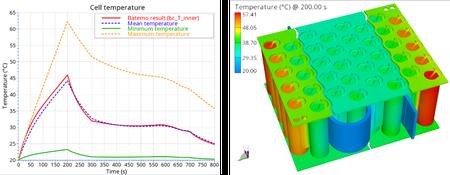
Figure 2: Temperature in a water-cooled 40 cell module: minimum / maximum / mean value vs. time (left); 3D temperature distribution @ 200 s (right)
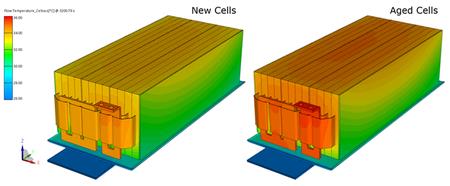
Figure 3: Temperature distribution in a 12 cell battery module (Left: New Cell, Right: Aged Cell)
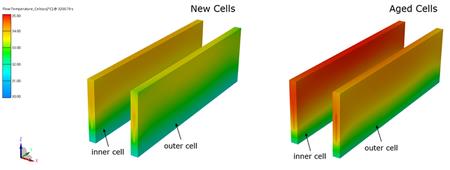
Figure 4: Temperature distribution of individual cells in battery module (left: new cell, right: aged cell)
The simulation also enables different scenarios or initial conditions to be taken into account. If stationary or transient load profiles are examined, specific properties can be set for each cell. This allows the effects of the initial state of charge or the aging state to be made visible. But it is also possible to examine how production-related scattering affects the thermal behavior. Each cell can be specifically assigned its own properties.
Analyze Batteries Electrochemically
AVL CRUISE M now enables half-cell modelling to support experimental studies of battery cells with individual electrodes not affected by the counter electrode.

Figure 5: Half-Cell Battery Model
Lithium plating plays a crucial role in cell aging. Depending on the operating conditions, lithium ions can deposit in metallic form and this metallic lithium now dissolves back into the electrolyte. The electrochemical model in CRUISE M is under continuous development and the new release offers you a more complete modelling of plating. The plating and stripping processes are modeled and it is now possible to describe known phenomena, such as the voltage plateau formation during the relaxation/discharging after a charging event.
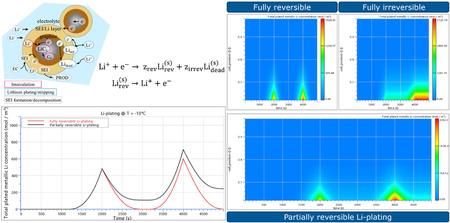
Figure 6: Lithium plating and striping
Solution: Battery Safety Analysis
With the introduction of the Battery Thermal Runaway Solution App and the Measurement Fitting App in release 2021 R2, we have taken a big step towards improving the user experience. This update includes further improvements based on the feedback collected.
Highlights of the Battery Thermal Runaway Solution App:
- Additional trigger temperatures: Thermal propagation and venting events can be triggered from the solution app GUI
- Introduction of the ability to select custom materials
- Full setup of battery thermal runaway simulation is now available
Minor usability improvements have been added to ensure a smooth workflow experience of the Measurement Fitting App.
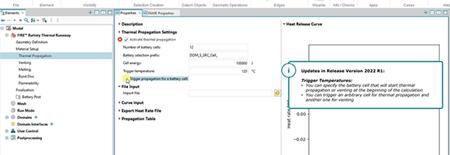
Figure 7: Trigger temperature settings for thermal runaway

Figure 8: Automatic setup of 3D formulas
Improve Energy Consumption Considerations and Your Parameter Studies
To consider transmission losses, differential, planetary gear set, and double pinion gear set components have been extended.
In addition to an improved quality of the energy consumption prediction, the extended models offer you a much higher model fidelity for parameter studies. You can either specify a constant base efficiency or the given efficiency is overruled by an enhanced efficiency model, in this case, the individual branch efficiencies and the power flow direction.
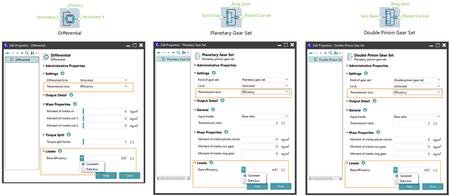
Figure 1: Planetary components now consider transmission losses
Model Losses in Gearbox, DCT, CVT and Transmission Component Efficiently
The gearbox, DCT, CVT and single ratio transmission components are given four new input options to describe transmission losses: torque loss map, efficiency map, torque loss regular map or torque loss provided via data bus. The wide range of input options allows you to efficiently model losses tailored to the actual inputs available.
The efficiency and torque loss map are spanned over temperature, gear (GB, DCT) or transmission ratio (CVT), speed and torque as inputs representing all possible different operating conditions. The most flexibility in modeling losses is provided by the data bus option. Here you can use any type of map or code to establish customized relationships between actual component operation and its losses.

Figure 2: Transmission loss model extensions
Use Multiple Data Sets in the Engine Parameterization Wizard
The well-known Engine Parameterization Wizard now gives you the possibility to define multiple data sets for steady-state and transient measurement data.
The different sets are distinguished by a newly introduced column holding the ID of the individual sets. In addition, the new "Measurement Data Selection" input page allows you to assign one or more data sets for the use in the various parameterization wizards (e.g. Pressure Drop Wizard, Turbocharger Wizard, etc.) and control functions.
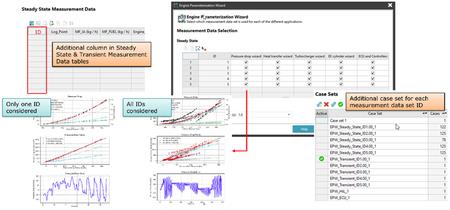
Figure 3: New "Measurement Data Selection" input page
Speed-up Refrigerator Cycle Models
Since simulating air conditioning or waste heat recovery systems normally is a computational challenge due to the phase change, this release of AVL CRUISE™ M contains an update.
The optimized solver settings for this type of application, together with the multi-rate solver backend, increase the computational speed of a typical air conditioning example by a factor of four. This results in an average real-time factor of less than one on typical desktop hardware.

Figure 4: Mobile air conditioning and waste heat recovery speed-up improvements
Increase the Level of Automation for HiL Deployment
Engine and aftertreatment models are typically set up separately in CRUISE M and later coupled in Model.CONNECT™ or on a HiL platform to simulate the coupled interaction of engine thermodynamics and exhaust gas aftertreatment.
To facilitate this coupling, three new library components Mass Flow Boundary Export, System Boundary Export and Surrogate Aftertreatment are introduced. The ability to match all three components provides you with a consistent and least error-prone way to export engine and aftertreatment models from CRUISE M and to wire them elsewhere.
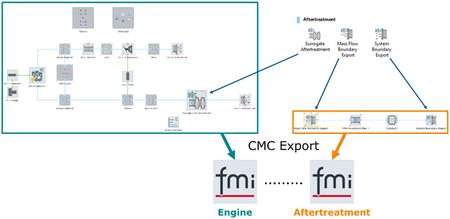
Figure 5: Semi-automated HiL deployment
Accelerate Your Model Setup with Sixteen New Control Components
Setting up models has become even more efficient thanks to the new advanced components in the 2022 R1 releases. CRUISE M offers you three control component groups (Signal Source, Signal Control and Drive Control) with a total of 16 new components.
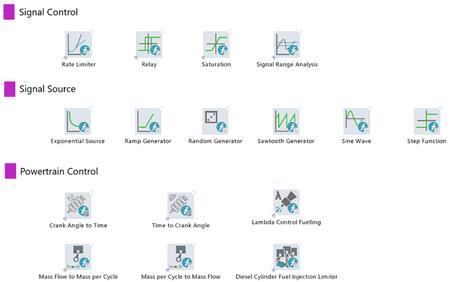
Figure 6: Control components library
You can use them as they are. Moreover, you can use the open code as an inspiring starting point for any kind of customization.
Get External Access to Model Parameters
CRUISE M now supports access to model parameters in exported models. You can select model parameters that should remain accessible in the model upfront. The exported model can be parameterized and run in any hosting environment according to the FMI standard.
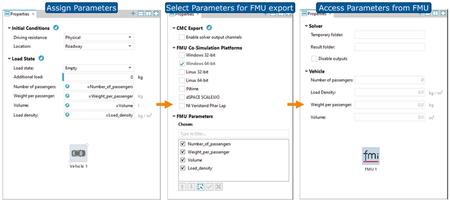
Figure 7: Exporting AVL CRUISE M model workflow and accessible parameters
Replace Results of an Element with Those of Another Element of the Same Type
The possibility to replace data shown in views with the data of another project, model, case set, or case has been extended. This new release enables the results of one model element to be replaced by those of another element of the same type. For example, if there is a chart containing results from the "wheel front left" element, the data can be replaced by that of the "wheel front right" element.
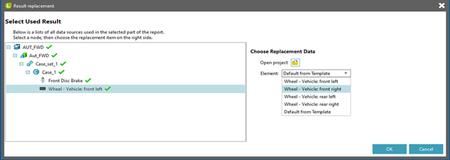
Figure 8: Improved replace results dialog
Make Aerodynamic Vehicle Simulations Simple with AVL FIRE M
Aerodynamics play an important role in the design of road vehicles. Aerodynamic performance has a significant impact on fuel consumption and emissions levels. For example, at speeds above 80km/h, aerodynamic drag has a major impact on the range of the electric vehicle. To get reliable results, you usually need both a theoretical background and experience in the field of aerodynamics.
The Vehicle Aerodynamics App launched with this release supports you with a guided workflow that leads you through the input of the necessary data and automatically creates the simulation setup. It includes all steps for embedded body simulation, setting boundary and initial conditions, and defining the output of the results.
Of course, the app allows you to further fine-tune the final setup and make adjustments at any time.
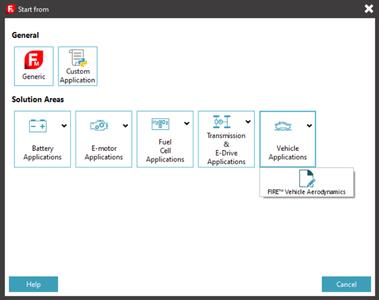
Figure 1: Vehicle Aerodynamics App

Figure 2: Mean pressure coefficient predicted by the embedded body method (Exp. Hupertz et al. SAE Technical Paper 2021-01-0958)
New model available: Heat Exchanger
The Heat Exchanger Model for compact heat exchangers with louvered fins is now available in AVL FIRE M. It is a part of the porosity module and can be selected as the "advanced heat exchanger" model. The model works in a multi-domain framework and allows you to create any number of heat exchangers. The main fluid flow over the heat exchanger is thermally coupled with the flow of the coolant inside the exchanger and is calculated using the 1D network model.
Hydrogen Combustion Ready
With AVL FIRE M's well-known ECFM-3Z model you are now able to simulate hydrogen (H2) combustion.
The model provides the same easy-to-build, easy-to-calibrate, fast, and robust solution for H2 combustion as for gasoline, diesel, and other hydrocarbon fuels. It also continues to focus on low resource requirements, maintaining its superior speed compared to detailed chemical approaches.
The standard ECFM-3Z model and the corresponding databases for laminar flame velocity and auto-ignition delay have been extended to also consider the pre- and post-flame effects as well as flame propagation during the combustion of pure hydrogen.
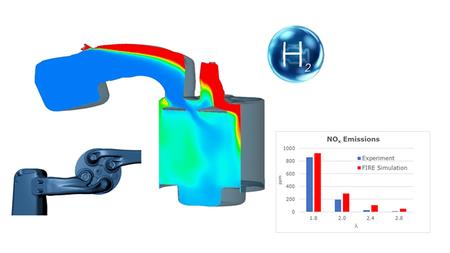
Figure 1: AVL FIRE M simulation of a hydrogen ICE for a heavy-duty application
The Use of Multiple Data Sets for Parametrization
Within our system simulation tool AVL CRUISE M, the enhancements of the Engine Model Generator and the Engine Parameterization Wizard have received noteworthy improvements.
The Engine Parameterization Wizard now allows you to define multiple datasets for steady-state and transient measurement data as a reference. The individual sets are given new identification numbers (ID) for immediate differentiation. In addition, one or more data sets can be provided on the "measurement data selection" input page for the usage in other parameterization wizards, such as the Pressure Drop Wizard, Turbocharger Wizard, and control functions. Model case sets are automatically created for each data set ID, allowing easy switching between operating modes defined by the different data sets.
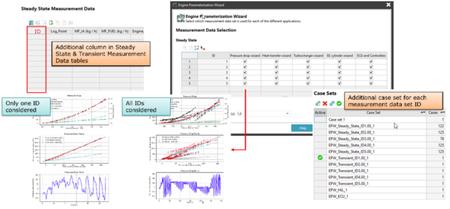
Figure 2: 'Measurement Data Selection' of the AVL CRUISE M Engine Parameterization Wizard
Further extensions and enhancements offered with 2022 R1:
AVL CRUISE M, Engine Thermodynamics
- Additional enhancements of the Engine Parameterization Wizard:
. Parameter for simulation end time
. Control offset function for waste gate or variable turbine geometry position
. New fueling function for engineering-enhanced gasoline cylinder
- Gas Property Generator offers simplified fuel specification
- Extensions of the Engineering-Enhanced Diesel Cylinder
. Now up to 10 injection events
. New cylinder de-activation model
. Improved level-one emission models
. Update regarding the impact of oxygenated fuel compositions
. Dedicated model for fuel injection equipment
. Improved post-injection model
. New engine brake model (Jake model)
- Extensions of the Crank-Angle Resolved Engineering-Enhanced Gasoline Cylinder
. Reference rail pressure for friction model now provided as regular map of speed and break mean effective pressure
. Now supporting multiple intake and exhaust valves
- Crank-Angle Resolved Cylinder now supports two-zone scavenging; multiple options available
- Extended functionality to support the efficient generation and simulation of 1D gas dynamic networks
. Hydraulic diameter and friction coefficient can be specified as function of pipe length
. Pipe ends support supersonic flows
. Now supporting variable compressor geometries
. Additional data bus for 'direct injector' to control fuel evaporation
. Cumulated data bus results made available for gas flow loss and mass flow boundary
AVL CRUISE M, Aftertreatment
- New library components are provided to simplify the coupling of separately generated engine and aftertreatment models
- Reloading reaction models created using the User Coding Interface does not overwrite parameters
- General gas species transport now fully linked to the material property database of the AVL Simulation Desktop
- Filter library of reaction models of the engineering-enhanced aftertreatment components extended with dedicated models for DPF, cDPF, SCRF, GPF and cGPF
- Catalyst library of reaction models of the engineering-enhanced aftertreatment components updated for TWC, SCR and ASC, DOC and NSC
- Numerous enhancements to support efficient setup of aftertreatment models
AVL FIRE M, IC Engine Performance and Emissions
- Introduction of 'model-based meshing' philosophy; existing AVL FAME Poly and AVL FAME Hexa meshes can be used by multiple cases
- AVL FAME M Engine and AVL FAME M Hexa settings can now be saved in a single file
- AVL FAME M Poly now also uses data pool elements
- Mass flow inlet boundary definition now allows prescribing a swirling motion
- Majority of the 'Thermal Offline Mapping App' inputs are now configurable
- Total cell number limit has been introduced for simulations using Adaptive Mesh Refinement (AMR)
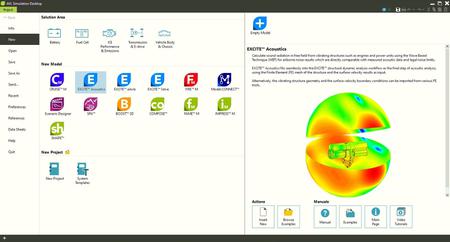
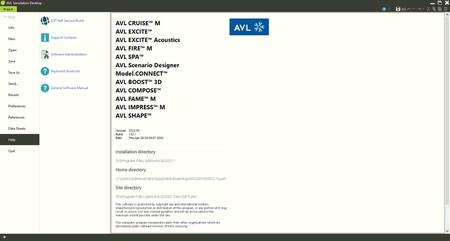
Simulation has long been a core AVL competence,and our Advanced Simulation Technologies (AST) business unit has solutions for a multitude of applications. They offer high-definition insights into the behavior and interactions of components, systems and entire vehicles. Our simulation solutions drive automotive efficiency, performance and innovation, while reducing development effort, costs and time-to-market. Used on their own, or combined with other methodologies and third-party tools, they support OEMs in the creation of market-leading products that meet global legislation.
AVL CRUISE / AVL CRUISE M
With more than 11,000 employees, AVL is the world's largest independent companyfor development, simulation and testing in the automotive industry, and in other sectors. Drawing on its pioneering spirit, the company provides concepts, solutions and methodologies to shape future mobility trends. AVL creates innovative and affordable technologies to effectively reduce CO2 by applying a multi-energy carrier strategy for all applications - from hybrid to battery electric and fuel cell technologies. The company supports customers throughout the entire development process from the ideation phase to serial production. To accelerate the vision of smart and connected mobility AVL has established competencies in the fields of ADAS, autonomous driving and digitalization.
AVL's passion is innovation. Together with an international network of experts that extends over 26 countries and with 45 Tech- and Engineering Centers worldwide, AVL drives sustainable mobility trends for a greener future. In 2020, the company generated a turnover of 1.7 billion Euros, of which 12% are invested in R&D activities.
Buy Premium From My Links To Get Resumable Support,Max Speed & Support Me
https://hot4share.com/v72mra7k6h6k/cc6a8..esUaVL2022_r1.part01.rar[/url].html
https://hot4share.com/1m8osz1hvk95/cc6a8..esUaVL2022_r1.part02.rar[/url].html
https://hot4share.com/9k0hz2nqiomg/cc6a8..esUaVL2022_r1.part03.rar[/url].html
https://hot4share.com/xce122dxf61y/cc6a8..esUaVL2022_r1.part04.rar[/url].html
https://hot4share.com/m1ix2zfx44ed/cc6a8..esUaVL2022_r1.part05.rar[/url].html
https://hot4share.com/cqayr0ck88w0/cc6a8..esUaVL2022_r1.part06.rar[/url].html
https://hot4share.com/z9it6cqrd5d6/cc6a8..esUaVL2022_r1.part07.rar[/url].html
https://hot4share.com/6dzzasdsgy0g/cc6a8..esUaVL2022_r1.part08.rar[/url].html
https://hot4share.com/nkxvqoyapw6f/cc6a8..esUaVL2022_r1.part09.rar[/url].html
https://hot4share.com/catjh4yjwfvv/cc6a8..esUaVL2022_r1.part10.rar[/url].html
https://hot4share.com/iohuc4xdhd4d/cc6a8..esUaVL2022_r1.part11.rar[/url].html
https://hot4share.com/au758r2o2ukh/cc6a8..esUaVL2022_r1.part12.rar[/url].html
https://hot4share.com/ypl8rrfqazq0/cc6a8..esUaVL2022_r1.part13.rar[/url].html
https://hot4share.com/zb98qvh1g7ek/cc6a8..esUaVL2022_r1.part14.rar[/url].html
https://hot4share.com/ybdktg15i6z2/cc6a8..esUaVL2022_r1.part15.rar[/url].html
https://hot4share.com/ukk0liqbw034/cc6a8..esUaVL2022_r1.part16.rar[/url].html
https://hot4share.com/jev5c6ynobwa/cc6a8..esUaVL2022_r1.part17.rar[/url].html
https://hot4share.com/us9isjskzd1p/cc6a8..esUaVL2022_r1.part18.rar[/url].html

https://rapidgator.net/file/19e900b0163f1f4ab4068eeb3ed192b5/cc6a8..esUaVL2022_r1.part01.rar.html
https://rapidgator.net/file/6ece42cc9ad9526e2546dd828e9109ee/cc6a8..esUaVL2022_r1.part02.rar.html
https://rapidgator.net/file/24a41e8335899b0b3a25fee3f01215c3/cc6a8..esUaVL2022_r1.part03.rar.html
https://rapidgator.net/file/eb8c34dfa34e17d4f07a9184666752b3/cc6a8..esUaVL2022_r1.part04.rar.html
https://rapidgator.net/file/565d5bd9f43fbf83c3193cd9c04c3d7e/cc6a8..esUaVL2022_r1.part05.rar.html
https://rapidgator.net/file/e163f31f96be67d9b0ea2967c33670aa/cc6a8..esUaVL2022_r1.part06.rar.html
https://rapidgator.net/file/51750184a91eac1983f51fef624cb097/cc6a8..esUaVL2022_r1.part07.rar.html
https://rapidgator.net/file/6b03cb287bcc5c66236d8769fd23dfcc/cc6a8..esUaVL2022_r1.part08.rar.html
https://rapidgator.net/file/0532b94bf5540ef33711baf6cd943ad7/cc6a8..esUaVL2022_r1.part09.rar.html
https://rapidgator.net/file/0d3c698c9ffddf08f30a5881e58b4c7c/cc6a8..esUaVL2022_r1.part10.rar.html
https://rapidgator.net/file/b3e3e925e2c8db32ef69ce7684932b7e/cc6a8..esUaVL2022_r1.part11.rar.html
https://rapidgator.net/file/9004ab8188dcb379e1e14a454efc20b6/cc6a8..esUaVL2022_r1.part12.rar.html
https://rapidgator.net/file/f910af67bb3dd2d73fe4d1c2064fe58a/cc6a8..esUaVL2022_r1.part13.rar.html
https://rapidgator.net/file/b692392205f5bd974c4d8192a5c9c35c/cc6a8..esUaVL2022_r1.part14.rar.html
https://rapidgator.net/file/ba6d4bb3f9f6284f71d5f8a1b34c830a/cc6a8..esUaVL2022_r1.part15.rar.html
https://rapidgator.net/file/d299bc49f3f23c044c942bc2c9e73f42/cc6a8..esUaVL2022_r1.part16.rar.html
https://rapidgator.net/file/5acfdf57a5c470a80611540de9f3209e/cc6a8..esUaVL2022_r1.part17.rar.html
https://rapidgator.net/file/bffd44f2da978212f22bec4e4d0e007d/cc6a8..esUaVL2022_r1.part18.rar.html

https://uploadgig.com/file/download/2C96Ffda09383e91/cc6a8..esUaVL2022_r1.part01.rar
https://uploadgig.com/file/download/eB63E154b73f24fC/cc6a8..esUaVL2022_r1.part02.rar
https://uploadgig.com/file/download/bD20DDF9C56d2fc1/cc6a8..esUaVL2022_r1.part03.rar
https://uploadgig.com/file/download/8d49335545655d57/cc6a8..esUaVL2022_r1.part04.rar
https://uploadgig.com/file/download/4500c20503317623/cc6a8..esUaVL2022_r1.part05.rar
https://uploadgig.com/file/download/0dB07eD41e4AB710/cc6a8..esUaVL2022_r1.part06.rar
https://uploadgig.com/file/download/c05b5320d89a42D9/cc6a8..esUaVL2022_r1.part07.rar
https://uploadgig.com/file/download/31dec40b8afa54DD/cc6a8..esUaVL2022_r1.part08.rar
https://uploadgig.com/file/download/dfA6ebddD8e1992C/cc6a8..esUaVL2022_r1.part09.rar
https://uploadgig.com/file/download/b05b9BCcA6f77E97/cc6a8..esUaVL2022_r1.part10.rar
https://uploadgig.com/file/download/a4aEdD955d14e28f/cc6a8..esUaVL2022_r1.part11.rar
https://uploadgig.com/file/download/Aa75b4982A46fBFb/cc6a8..esUaVL2022_r1.part12.rar
https://uploadgig.com/file/download/126356d1Bedd7B29/cc6a8..esUaVL2022_r1.part13.rar
https://uploadgig.com/file/download/3dcaF9F203d9f45b/cc6a8..esUaVL2022_r1.part14.rar
https://uploadgig.com/file/download/e180F304221587Dc/cc6a8..esUaVL2022_r1.part15.rar
https://uploadgig.com/file/download/a588dFcFe44c2cf2/cc6a8..esUaVL2022_r1.part16.rar
https://uploadgig.com/file/download/8D9e6253eDdd8970/cc6a8..esUaVL2022_r1.part17.rar
https://uploadgig.com/file/download/AdC33935Db79ea41/cc6a8..esUaVL2022_r1.part18.rar

https://nitro.download/view/92E670B58092355/cc6a8..esUaVL2022_r1.part01.rar
https://nitro.download/view/927C7508A3842DA/cc6a8..esUaVL2022_r1.part02.rar
https://nitro.download/view/5A19BA195204055/cc6a8..esUaVL2022_r1.part03.rar
https://nitro.download/view/1085D5F20FDCF3D/cc6a8..esUaVL2022_r1.part04.rar
https://nitro.download/view/DCE23F916924B62/cc6a8..esUaVL2022_r1.part05.rar
https://nitro.download/view/D4F1CD837F037F4/cc6a8..esUaVL2022_r1.part06.rar
https://nitro.download/view/AB5CAB58D02CDF1/cc6a8..esUaVL2022_r1.part07.rar
https://nitro.download/view/E9D6AE382AC6233/cc6a8..esUaVL2022_r1.part08.rar
https://nitro.download/view/BCBADF87868207C/cc6a8..esUaVL2022_r1.part09.rar
https://nitro.download/view/09821DB51D609FB/cc6a8..esUaVL2022_r1.part10.rar
https://nitro.download/view/494B7694A00D573/cc6a8..esUaVL2022_r1.part11.rar
https://nitro.download/view/098D9214138681F/cc6a8..esUaVL2022_r1.part12.rar
https://nitro.download/view/BCFD4B39C93D7D7/cc6a8..esUaVL2022_r1.part13.rar
https://nitro.download/view/9E9E45339E0258C/cc6a8..esUaVL2022_r1.part14.rar
https://nitro.download/view/3FBBB59E23733B6/cc6a8..esUaVL2022_r1.part15.rar
https://nitro.download/view/2F2CC768263477F/cc6a8..esUaVL2022_r1.part16.rar
https://nitro.download/view/017F0148183781E/cc6a8..esUaVL2022_r1.part17.rar
https://nitro.download/view/C38794ECC290158/cc6a8..esUaVL2022_r1.part18.rar










